Occupational Environment Monitoring at Speaker Manufacturing Factory
99,000 ₫
Note: The above price is calculated for one sample, the price may vary depending on the area of the environment to be monitored and the fluctuations of the market. For more accurate price support, please refer to the quotation table or contact our consulting staff directly.
Environmental monitoring of the speaker manufacturing factory is a session of collecting, analyzing, and evaluating workplace factors that may harm workers’ health.
Table of Contents
Toggle1. Overview of the speaker factory
a. What is a speaker factory?
Factory speakers is a manufacturing facility specializing in producing various types of speakers, used in audio devices such as home audio systems, car audio systems, entertainment equipment, industrial equipment, event audio systems, and many other applications.

b. Production stages in a speaker factory
The production stages in a speaker factory may include:
- Design and research: This process includes researching and developing new speaker designs, customizing the sound and sensitivity of speakers to meet customer requirements.
- Component manufacturing: The speaker factory can produce the basic components of speakers such as drivers (woofer, tweeter), diaphragms, magnets, coils, and other parts. This process may include machining, casting, plastic molding, and other manufacturing techniques to create high-quality components.
- Assembly: After the components have been manufactured, the assembly process begins. Workers will assemble the components into the speaker cabinet, connect wires, and other parts according to design and specifications.
- Testing and adjustment: After assembly, testing and adjustment are carried out to ensure the quality and performance of the speakers. This may include sound testing, sensitivity measurement, frequency response evaluation, and other factors to ensure proper operation and good sound quality.
- Packaging and transportation: After testing and adjustment, the speakers are packaged into boxes and prepared for transportation to customers or retail stores.

c. Types of machinery used in a speaker factory
In a speaker factory, many types of machinery and equipment are used to carry out production processes. Below are some common machines in the speaker manufacturing process:
- Cutting and machining machines: Including metal cutting machines, wood cutting machines, lathes, milling machines, grinders, and other machining machines. These machines are used to manufacture and process speaker components such as frames, cabinets, baffles (front panels), and other basic parts.
- Plastic molding and casting machines: Used to shape and mold plastic parts of speakers such as cabinets, diaphragms, and other plastic parts. These machines may include thermal plastic molding machines, injection molding machines, and plastic casting machines.
- Weaving and sewing machines: Used to produce speaker grills and other fabric parts in speaker manufacturing.
- Wire cutting and winding machines: Used for cutting and winding electric wires, voice coils, and inductive coils.
- Welding and assembly machines: Used for welding and assembling speaker components such as drivers, magnets, and coils.
- Testing and measuring machines: Including audio testing machines, frequency response measuring machines, sensitivity measuring machines, and other testing devices to ensure speaker quality and performance.
- Printing and stamping machines: Used to print and stamp logos and brands on speaker components.
- Packing and boxing machines: Used to pack and box completed speakers for shipping.

d. What occupational diseases may occur for workers in a speaker factory?
Workers in a speaker factory may suffer from some occupational diseases related to the working environment and production process. Below are some common occupational diseases that may occur in the speaker manufacturing industry:
- Ear diseases: Workers may suffer ear damage due to high noise during production and sound testing. Diseases such as hearing loss, auditory damage, and ear-related accidents may occur.
- Respiratory diseases: Workers may be exposed to dust, metal fumes, chemicals, and other irritants. This can lead to respiratory problems such as asthma, pneumonia, allergic rhinitis, and other respiratory issues.
- Skin diseases: Contact with chemicals and additives during speaker production may cause skin irritation, dermatitis, skin allergies, and other skin-related problems.
- Musculoskeletal diseases: Labor involving force or repetitive movements of hands and neck may cause musculoskeletal issues such as joint degeneration, arthritis, wrist pain, and other musculoskeletal disorders.
- Psychological diseases: Work in an industrial environment may create psychological pressure and stress for workers, especially when working with fast-paced production lines and strict quality standards. This may lead to psychological issues such as stress, depression, and anxiety.
To ensure safety and health for workers, protective measures and occupational health and safety regulations should be applied in the speaker factory.

e. Popular types of speakers in the market
There are many popular types of speakers in the market, including:
- Bookshelf speakers: These are compact speakers usually placed on shelves or tables. Bookshelf speakers often have 2-way or 3-way designs, providing relatively good sound quality in small spaces.
- Floorstanding speakers: These are large speakers usually placed on the floor. Floorstanding speakers can reproduce powerful and detailed sound, suitable for large spaces or professional audio systems.
- Center speakers: Center speakers are often used in home theater systems to reproduce central sounds, including dialogue and audio effects from the screen.
- Subwoofers: Subwoofers produce deep bass sounds, ensuring that low frequencies are reproduced strongly and vividly. Subwoofers are often used in home theater and music systems.
- Bluetooth speakers: Bluetooth speakers are wireless, allowing connection to devices via Bluetooth. They are suitable for mobile music listening or creating flexible sound spaces.
- Soundbars: Soundbars are long, slim speakers usually placed under TVs or mounted on walls. Soundbars provide clear and extended sound for TV audio systems.
- Portable Bluetooth speakers: These are compact, easy-to-carry speakers that wirelessly connect to devices via Bluetooth. Portable Bluetooth speakers are suitable for outdoor activities or on-the-go music listening.
2. Overview of occupational environment monitoring service
a. What is occupational environment monitoring at a speaker factory?
Occupational environment monitoring (or workplace environment measurement) at a speaker factory is the activity of collecting, evaluating, and analyzing measurement indicators of occupational environmental factors at the speaker factory, in order to take timely measures to minimize environmental harm to workers’ health and prevent occupational diseases. Occupational environment monitoring is a mandatory requirement for speaker factories.
Occupational environment monitoring plays the most important role in taking care of, protecting, and improving workers’ health because the main resource of enterprises and the direct creators of profit are workers. Workers frequently exposed to risk factors and occupational hazards beyond permitted standards will have their health affected and may develop occupational diseases.
REGISTER FOR OCCUPATIONAL ENVIRONMENT MONITORING SERVICE
b. Occupational environment monitoring program of Nam Viet
The occupational environment monitoring program of Nam Viet is a program researched by monitoring engineers in the field of occupational safety and environmental protection. With the goal of ensuring workers’ health and safety, this program uses modern measurement methods to monitor air quality, water, microclimate factors, physical elements, dust, etc. in the working environment. This is a very important program in ensuring a safe workplace and protecting workers’ health.
In addition, the occupational environment monitoring program of Nam Viet also plays an important role in researching and developing new solutions to improve workplace environmental quality. With the dedication and professionalism of the monitoring expert team, the exclusive monitoring program of Nam Viet is becoming a breakthrough in occupational safety management and environmental protection in Vietnam.

c. Standardization in the workplace environment measurement process
The standardization in the workplace environment measurement process of Nam Viet is a very important aspect in ensuring the quality of measurement results. To ensure accuracy and reliability of the results, this program uses standardized standards and procedures recognized by the Department of Health Ho Chi Minh City. This ensures that collected data will be highly reliable for workplace environment assessment and making decisions to improve the workplace environment to protect workers’ health.
These standardized processes also ensure that measurement results are conducted by monitoring specialists with high qualifications and many years of experience, helping managers and experts trust the results from An Toan Nam Viet and make accurate, valuable decisions in protecting workers’ health and the environment.
By applying standardization in the workplace environment measurement process, Nam Viet is demonstrating its commitment to ensuring a safe working environment and protecting workers’ health, while also positively contributing to the development and enhancement of occupational safety management and environmental protection in Vietnam.
d. Monitoring report results of a speaker factory
The occupational environment monitoring results are prepared according to form No. 04 Appendix III issued with Decree 44/2016/ND-CP and made into 02 copies: 01 copy sent to the workplace that signed the contract for occupational environment monitoring and 01 copy stored at the organization conducting occupational environment monitoring.
The storage time for occupational environment monitoring results is in accordance with the law, which is indefinite storage of records.

e. Frequency of occupational environment monitoring according to legal regulations
According to Clause 2 Article 18 of the Law on Occupational Safety and Hygiene 84/2015/QH13, employers must organize occupational environment monitoring to assess harmful factors at least once a year.
f. Deadline for submitting occupational environment monitoring reports according to legal regulations
The deadline for submitting reports is before December 31 every year. Enterprises belonging to production facilities must submit occupational environment monitoring reports to the Department of Health at the locality where the production and business facilities have their headquarters and where workers are employed.
When there are changes in technological processes, production processes, or when renovating and upgrading workplaces that may generate new harmful factors for workers’ health, enterprises belonging to production facilities must update workplace hygiene records regarding harmful factors that require occupational environment monitoring.
g. Regulations on penalties for violations of occupational environment monitoring by employers
According to Article 27 of Decree No. 12/2022/ND-CP dated January 17, 2022, on regulations of administrative penalties in the fields of labor, social insurance, and Vietnamese workers working abroad under contracts.
- Clause 2: A fine of 2,000,000 – 5,000,000 VND for employers who do not publicly announce occupational environment monitoring results and the results of inspection, assessment, and management of hazardous factors at the workplace immediately after the results are available.
- Clause 3: A fine of 20,000,000 – 40,000,000 VND for employers who do not conduct occupational environment monitoring to control harm to workers’ health as required by law.
- Clause 4: A fine of 40,000,000 – 60,000,000 VND for employers who collude with occupational environment monitoring organizations to commit fraud in monitoring activities but not to the extent of criminal prosecution.
3. Harmful environmental factors for workers in speaker manufacturing factories
In the working environment of speaker manufacturing factories, there may be harmful environmental factors for workers. Some environmental factors may include:
- Noise: Excessive noise during the production and testing of speakers can cause health problems for workers, such as stress, insomnia, reduced work performance, and long-term hearing damage.
- Dust and chemical fumes: During speaker production, dust can be generated from processing, machining, and assembly materials. In addition, the use of chemicals such as adhesives, coatings, or paints can also create toxic chemical fumes. Prolonged exposure to dust and chemical fumes can cause respiratory problems, allergies, rhinitis, pneumonia, and other health issues.
- Voltage and power sources: During the production and testing of speakers, workers may be exposed to high voltage or unsafe power sources. This can pose risks such as electric shock, fire, explosion, or electrical injuries.
- Material factors: Some materials used in speaker production may contain toxic compounds such as lead, mercury, or phthalates. Long-term exposure to these toxic substances can cause health issues, such as hormonal disorders, body damage, and the risk of disease development.
- Temperature and humidity: The working environment in speaker manufacturing factories may have high temperature and humidity, especially during processing and heat pressing. This can cause difficulties for workers, leading to fatigue, discomfort, and impacts on overall health.
REGISTER FOR OCCUPATIONAL ENVIRONMENT MONITORING SERVICE
4. Measures to improve the working environment in speaker manufacturing factories
To improve the working environment in speaker manufacturing factories and protect workers’ health, the following measures can be applied:
- Noise control: Ensure that the factory has a soundproofing system and provides hearing protection devices for employees. In addition, implement measures to reduce noise at the source by using soundproof materials, noise reduction systems, or complying with noise safety standards.
- Dust and chemical management: Establish an effective dust extraction system to reduce dust during production. Ensure the use of appropriate protective equipment such as masks, safety glasses, and gloves when handling hazardous chemicals. At the same time, ensure safe chemical use and comply with proper waste management procedures.
- Electrical safety: Ensure that machinery and electrical equipment are properly installed, maintained, and used. Conduct periodic electrical safety inspections, ensure electrical systems are properly connected, and guarantee worker safety.
- Material management: Use safe and non-toxic materials in speaker production. Ensure that the use and handling of hazardous materials comply with legal regulations and authorities’ guidelines.
- Temperature and humidity adjustment: Ensure comfortable working conditions with stable temperature and humidity. Provide air conditioning systems, ventilation, and proper management of temperature and humidity issues in the factory.
- Training and supervision: Provide training on occupational safety and protection for workers. Ensure supervision and compliance with safety rules during speaker production. Promote awareness of occupational safety and health among all employees.
- Continuous evaluation and improvement: Conduct periodic occupational environment assessments to identify and minimize harmful factors. Continuously improve work processes and the working environment to ensure workers’ safety and health.
- Periodically organize occupational environment monitoring in factories and enterprises, collect and analyze harmful factors for workers, and then adjust to reduce risks in order to prevent occupational diseases for them.
5. Benefits of periodic monitoring of speaker manufacturing factories
An Toan Nam Viet provides businesses with great benefits when using occupational environment monitoring services in accordance with Decree 44/2016/ND – CP on the management and control of harmful factors in the working environment affecting workers.
- Businesses can proactively control harmful factors in workshops or factories.
- Receive consulting and recommendations on measures to minimize harmful factors and improve the quality of the working environment.
- Indirectly protect human resources, the key factor in business development.
- Reduce the harmful effects of occupational diseases on human health, thereby minimizing future medical treatment costs.
- Improve workers’ health, leading to guaranteed and sustained product quality and output.
- Comply with occupational safety laws, avoiding legal risks.
- Create credibility and professionalism in all aspects, thereby enhancing the brand for businesses.
The occupational environment monitoring service of An Toan Nam Viet is the solution to minimize the harmful effects of occupational diseases, contributing to creating a healthy and high-quality working environment.

6. National occupational environment monitoring center
Occupational environment monitoring center of An Toan Nam Viet is a professional unit in monitoring and measuring the quality of occupational environments throughout all provinces in Vietnam. With a team of experienced monitoring specialists, the center uses modern measuring equipment, ensuring accuracy and reliability.
In addition to providing monitoring services, the center also supports customers in planning, handling, and tracking occupational environment issues. With the motto “customers are the center,” the center cares about customer satisfaction, meets all customer needs, and is committed to providing the best solutions for businesses.
REGISTER FOR OCCUPATIONAL ENVIRONMENT MONITORING SERVICE
With investments in technology, equipment, and human resources, the monitoring center of An Toan Nam Viet has been and is becoming one of the reputable units in the field of occupational environment monitoring in Ho Chi Minh City with the following objectives:
- We always value our brand reputation and the quality of our products and services.
- We provide customers with the best and most suitable solutions possible.
- Together with a team of experienced Masters and Engineers, we aim to protect the environment and benefit businesses.
- With the An Toan Nam Viet monitoring team, your company will receive professional service from experts in the monitoring field, as well as the best cost benefits.
The occupational environment monitoring process at An Toan Nam Viet includes the following basic steps:
- Before conducting occupational environment monitoring, our company always ensures that machinery and equipment for monitoring are calibrated and adjusted in accordance with legal regulations.
- Strictly follow the occupational environment monitoring procedures committed with the Department of Health.
- Report monitoring results truthfully to employers.
- In cases where occupational environment monitoring results do not ensure worker safety, An Toan Nam Viet will provide remedial solutions and the workplace shall implement as follows:
- Implement measures to improve working conditions to minimize harmful factors and prevent occupational diseases.
- Organize health checks to detect occupational diseases and work-related illnesses early for workers in unsafe environments.
- Provide in-kind benefits to workers in accordance with labor laws.

7. Occupational environment monitoring quotation
To help businesses conduct occupational environment monitoring in a professional and efficient way, An Toan Nam Viet provides customers with a high-quality and reasonably priced occupational environment monitoring service quotation.
- Our quotation provides detailed information about the pricing of the monitoring services we offer, including costs related to travel, measurement, analysis, and reporting. Customers can rest assured of the accuracy and reliability of the monitoring reports we provide.
- We are committed to always offering the most competitive and reasonable prices in the market, while also being ready to provide quick and professional consultation for any questions regarding monitoring services.
- With the An Toan Nam Viet quotation, customers can easily choose service packages that suit their needs. We are committed to delivering the highest customer satisfaction with our professional service quality.
No comments yet

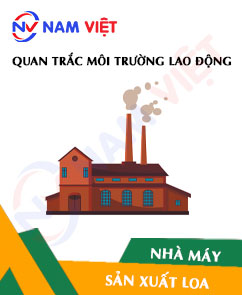
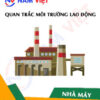
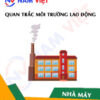
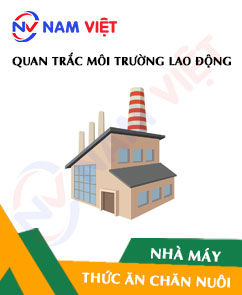
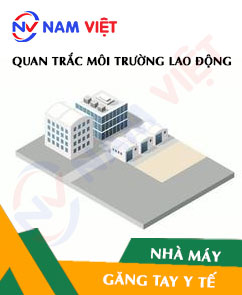


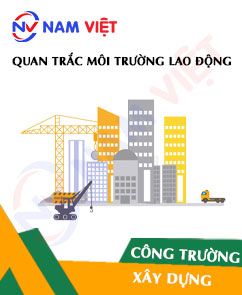
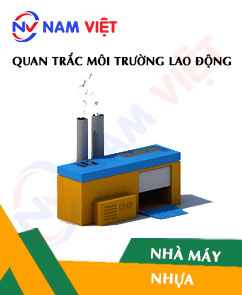


Review Occupational Environment Monitoring at Speaker Manufacturing Factory
There are no reviews yet.